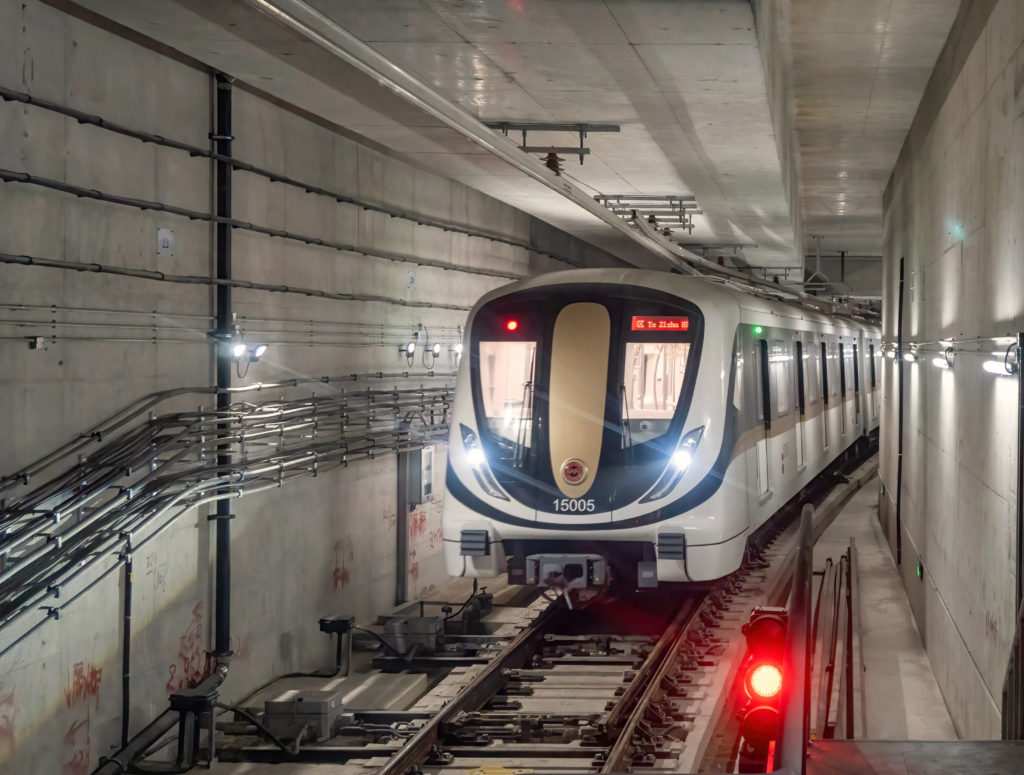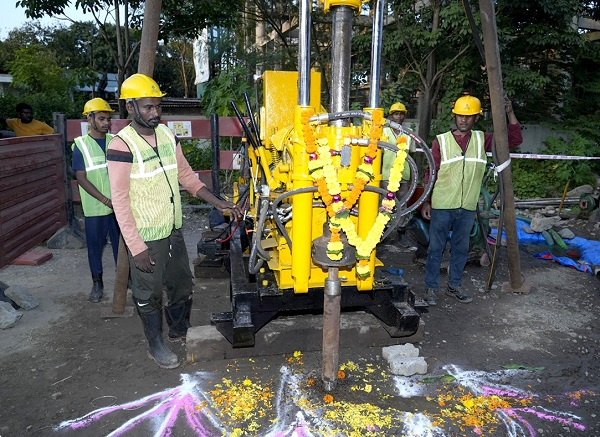
Thane in short
Thane is a metropolitan city in the northwestern part of the state of Maharashtra in India. It is an essential component of the Mumbai metropolitan area and a vibrant city that successfully combines modern development with historical relevance.
The city is primarily a residential suburb of Mumbai, although it also has a large industrial complex, including an industrial estate. It is home to the chemical, engineering and textile industries.
In Asia, the first passenger train ever arrived in Thane. The passenger rail service between Bori Bunder (Bombay) and Thane was launched on 16 April 1853.
Public transport in Thane
Thane has a well-developed transport infrastructure and serves as a major hub on the central line of Mumbai’s suburban rail network, handling approximately 654,000 passengers per day. On the other hand, Thane Municipal Transport (TMT), under the Thane Municipal Corporation, operates around 250 buses on 74 routes. However, due to expanding urbanization, existing modes of transportation struggle to accommodate commuters, especially during rush hours. Inadequate public transport capacity has increased dependence on private vehicles, resulting in congested roads and increased pollution. The introduction of a metro in Thane city is expected to accommodate an expected ridership of around 6.47 lakh passengers per day by 2029, increasing to 8.72 lakh by 2045.

The need for a metro system in Thane City.
- Increasing demographic trends: In 2001, Thane had a population of 8,131,849, and as per the 2011 census, Thane City had a population of 1,841,488. As of 2024, Thane’s population is estimated to be 26,129,000. To support this growing population, Thane City requires an efficient mode of transport that integrates with other transport systems to provide seamless connectivity across the city.
- Increased traffic congestion on the roads: Due to growing urbanization, Thane experiences severe traffic congestion due to high density of vehicles on the roads. Existing road infrastructure is often inadequate to handle the growing number of commuters.
- Overloaded railway system: Although Thane is served by suburban train services, these are often overcrowded, especially at peak times. Current capacity does not meet the needs of a rapidly growing population, resulting in inconvenience and safety concerns for passengers.
Thane Metro Overview
On 16 August 2024, the Union Cabinet headed by Prime Minister Shri Narendra Modi approved the Thane Integral Ring Metro Project in Maharashtra. This 29 km corridor will run along the western outskirts of Thane city and includes 22 stations. The metro route will be located between Ulhas river on one side and Sanjay Gandhi National Park (SGNP) on the other.
Thane Integral Ring Metro Rail Project – Financial Structure
Estimated project cost: ₹12,200 crore
Funding sources: Thane Metro will run with an equal capital contribution from Government of India (GOI) and the Government of Maharashtra (GoM).
Partial financing:
Additional financing methods:
- Station naming and access rights for companies
- Monetization of resources
| The state government has urged the Thane Municipal Corporation to contribute ₹5,078.04 crore towards equity and cover land acquisition expenses. Additionally, the State will provide an interest-free subordinated loan of ₹969.75 crore. |
Project transitions
The Thane Integral Ring Metro Rail project has seen several changes since its inception:
- December 2018: The foundation stone of the project was laid by the Prime Minister. Initially, it was conceived as a traditional, heavy metro line for Thane’s mass transit needs.
- 2019: Mass transit proposal was put on hold due to financial constraints.
- Early 2020: The project has been revived with plans for a light rail transit (LRT) or metrolite system.
- 2023: The project was redefined again and brought back to the original concept of a full-scale metro line.
- 2024: The Union Cabinet has granted approval for the Thane Integral Ring metro rail project. MAHA Metro has been entrusted to run the Thane Metro.
Main features:
| Responsible authority | Maharashtra Metro Rail Corporation Limited | |
| Total distance | 29km | |
| Total stations | 22 stations | |
| High | 20 stations | |
| Subway | 2 stations | |
| Total cost | Rs. 12,200.10 crores | |
| Current status | Under construction | Geotechnical work begins on Waghbil road |
| Operating | 0km | |
| Approved | 29km | |
| Proposed | 0km | |
| Operational from | 2029 | |
| Electrification | 25 kV, 50 Hz AC OHE | |
| Track gauge | Standard gauge – 1435 mm | |
| Report | Communications-Based Train Control (CBTC) | |
| Expected daily usage | 6.47 lakh in 20297.61 lakh in 20358.72 lakh in 2045 | |
Thane Metro Phase 1

Thane Metro Phase 1 project will go around Thane city with 1 circular line.
- Stations: 22 stations (20 elevated and 2 underground).
- Length: 29km
- Station names: Raila Devi, Wagle Circle, Lokmanya Nagar Bus Depot, Shivaji Nagar, Neelkanth Terminal, Gandhi Nagar, Dr. Kashinath Ghanekar Natyagraha, Manpada, Dongripada, Vijaynagari, Waghbil, Waterfront, Patlipada, Azad Nagar Bus Stand, Manorma Nagar, Area industrial of Kolshet, Balkum Naka, Balkumpada, Rabodi, Shivaji Chowk, Thane Junction (subway) and New Thane (subway).
Work in progress on Thane Metro
- Start of geotechnical works: In early October 2024, Renuka Consultants officially started subsurface geotechnical investigation work at Hiranandani Estate.


- New logo for Thane Metro: Maha Metro has unveiled the new logo of Thane Metro.

Contracts for the project
| Contract | Job description | Contract value | Contractor details |
| DDC-01 | Detailed design consultancy services for 6 elevated stations:Dr. Kashinath Ghanekar NatyagrahaManpadaDongripadaVijay NagariWaghbilSeafront | Rs. 1.35 crores | STUP Consultants Pvt. Ltd |
| Console-01 | Appointment of general consultants for Thane Integral Ring Metro project, for rapid implementation of Thane Metro by providing support in contract management, design, safety, monitoring and quality assurance. | Ongoing offers (offers invited in October and will be closed by November) | |
| Geo-01 | Geotechnical investigation for Thane Metro | Renuka Consultants | |
| S&E-01 | Study of the Environmental Impact Assessment (EIA) and preparation of the Environmental Management Plan (PGA) | In the month of October, 4 offers were presented. | |
| S&E-02 | Study of social impact assessment (SIA) and preparation of social management implementation plan, rehabilitation and resettlement plan (research and development policy). | The offer is ongoing. |
Challenges involved in Thane Metro project
Financial sustainability: The project involves funding of ₹12,200 crore and like other metro projects in India, achieving financial sustainability will be a challenge for Thane Metro.
Procedural and approval delays: Changes have been made to the planning and design of the Thane Metro project since it was first announced. It started as a heavy Metro, transitioned to Metro Lite format, and then went back to being a conventional Metro. These changes have caused delays and impacted timelines.
Ground problems: The predominantly elevated route of the Thane Metro requires land acquisition, along with rehabilitation and resettlement of affected residents and businesses. Managing these activities efficiently will be critical, as delays in land acquisition or resettlement could lengthen project times and increase costs.
Social acceptance: Compared to the Metro, Thane City’s suburban rail network offers a cheaper mode of transportation. Convincing people to choose Thane Metro will be one of the biggest challenges for Maha Metro.
Environmental Concerns: The construction of the metro line could have an impact on the local ecosystem, especially in the vicinity of Upwan Lake, where locals have expressed concern about environmental degradation caused by the growth of urban infrastructure. Development and ecological preservation must be balanced by executive agencies.
Benefits associated with Thane Metro
Integration with Mumbai Metro and Suburban Rail: Thane, a residential suburb of Mumbai, has a large portion of its population commuting to Mumbai daily for work. Thane Metro will integrate with Mumbai Metro Line 4 (Wadala–Kasaravadavali) and Line 5 (Thane–Bhiwandi–Kalyan)as well as with Railways TO Thane Junction Station. This integration will facilitate smoother traffic flow, reducing pressure on other modes of transport.
Reduction of traffic congestion: Due to its integration with other modes of transport, more people are likely to opt for Thane Metro to reach their destinations, thereby reducing road traffic. Initial projections indicate that Thane Metro will attract around 6.47 lakh daily commuters.
Environmental sustainability: Shifting from private vehicles to public transport will help reduce pollution in cities, supporting India’s long-term goal of achieving net-zero emissions by 2070.
Boost to the economy: As the city becomes more connected and accessible, property prices are expected to increase along the Thane Metro route. Additionally, the route will attract businesses to locate near the stations due to increased commuter traffic.
Employment generation: The construction and operation of Thane Metro will create employment opportunities for residents.
Conclusion
The Thane Metro project aims to meet the growing transportation needs of Thane with a 29 km circular line comprising 22 stations. Designed to ease congestion, support the growing number of commuters and reduce pollution, the Metro is expected to serve over 6 lakh passengers per day by 2029. Integrated with Mumbai’s transport network, it will offer better connectivity for residents of Thane. While challenges such as funding, land acquisition and environmental concerns remain, the metro project is set to improve urban mobility and provide practical benefits to Thane’s daily commuters.
Read Full Article Here
For more updates visit NIC Blog Home Page






